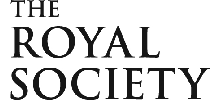

New quantum physics research will improve earth and space navigation telecommunications, geological exploration, and medical imaging.
Researchers have developed a portable way to produce 'ultracold' atoms for quantum technology and quantum information processing.
The project was carried out jointly between University of Strathclyde, Imperial College London, University of Glasgow and the National Physical Laboratory. The results have been published in the journal Nature Nanotechnology, where it is featured on the front cover.
Many of the most accurate measurement devices, including atomic clocks, work by observing how atoms transfer between individual quantum states. The highest precision is obtained with long observation times, often using slow-moving ultracold atoms prepared in a large apparatus.
Dr Aidan Arnold, a Lecturer in Strathclyde’s Department of Physics said: "The longer the transition of atoms can be observed, the more precisely they can be measured. It is possible to shine laser light on atoms to slow them down using the Doppler effect. We can now do this in a really small device."
The researchers have developed technology that is far more compact than previous setups but can still cool and trap large numbers of atoms for use in portable devices. They patterned the surface of a semiconductor chip to form a diffraction grating, splitting a laser into many beams that cool the atoms.
Professor Ed Hinds, who directs the Centre for Cold Matter in Imperial's Department of Physics, said: "These specially micro-fabricated diffraction gratings create the perfect laser beams for trapping and cooling atoms."
Portable clocks, magnetometers and accelerometers have wide-ranging applications, including navigation on earth and in space, telecomunications, geological exploration, and medical imaging.
Dr Alastair Sinclair, Principal Scientist at the National Physical Laboratory said: "The miniaturisation of atomic sensors using these optical gratings can make an important contribution to metrology and high-precision measurement."
Professor Charlie Ironside of the School of Engineering, University of Glasgow, said: "The specialised optical diffraction gratings were co-designed by the groups in the collaboration and some of them were microfabricated in the James Watt Nanofabrication Centre at the University of Glasgow – the work is a good example of how a team of physicists and engineers can collaborate to produce cutting edge technology."
The project was funded by EPSRC, ESA, the EU AQUTE project, the Wellcome Trust, the UK National Measurement Office, the Royal Society of Edinburgh and the Royal Society
Supporters




Article text (excluding photos or graphics) available under an Attribution-NonCommercial-ShareAlike Creative Commons license.
Photos and graphics subject to third party copyright used with permission or © Imperial College London.
Reporter
Professor Hinds
Department of Physics

Contact details
Tel: +44 (0)20 7594 7901
Email: ed.hinds@imperial.ac.uk
Show all stories by this author




Leave a comment
Your comment may be published, displaying your name as you provide it, unless you request otherwise. Your contact details will never be published.